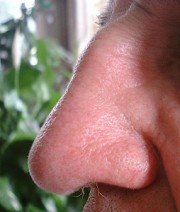By Charley James
Did you know that 7-13 April is Parkinson’s Awareness Week 2014? To mark the occasion, here are 10 facts you might not have known about Parkinson’s Disease. Go on, improve your awareness!
 1. Parkinson’s Disease is named after British surgeon James Parkinson, who in 1817 wrote An Essay on the Shaking Palsy. Whilst Parkinson was the first to observe and describe the symptoms in a number of patients, it was actually Jean-Martin Charcot, a French neurologist, who would later coin the name ‘Parkinson’s Disease’.
1. Parkinson’s Disease is named after British surgeon James Parkinson, who in 1817 wrote An Essay on the Shaking Palsy. Whilst Parkinson was the first to observe and describe the symptoms in a number of patients, it was actually Jean-Martin Charcot, a French neurologist, who would later coin the name ‘Parkinson’s Disease’.
2. There is not yet a cure for Parkinson’s Disease, but there are very effective – almost miraculous – treatments for the symptoms. Of all the neurological disorders, Parkinson’s is one of the most treatable.
3. Symptoms are often on only one side of the body, or are asymmetric; this asymmetry persists throughout life.
4. Communication may be hindered by a softness of voice, decreased articulation, monotone speech, loss of normal inflection, and a decline in facial animation and expression.
5. Progression of Parkinson’s disease varies from person to person; it may be slow and in some cases may never lead to significant impairment.
6. There is no single laboratory test a doctor can order to confirm whether a person has Parkinson’s disease. There are, however, four “Cardinal Symptoms”, the combination of any two being enough for diagnosis:
(a) Resting tremor
(b) Bradykinesia (slowness of movement)
(c) Rigidity
(d) Postural Instability
7. While it is recognised that depression, apathy, and anxiety can be frequent “partners” of Parkinson’s, it is not uncommon for people to find inspiration and new meaning in their lives after their diagnosis.
 8. Physicians may use the Hoehn and Yahr scale to report the degree of disease progression, and the Unified Parkinson’s Disease Rating Scale to describe the severity of the symptoms and signs.
8. Physicians may use the Hoehn and Yahr scale to report the degree of disease progression, and the Unified Parkinson’s Disease Rating Scale to describe the severity of the symptoms and signs.
9. Exposure to paraquat, a pesticide, triples a person’s risk of getting Parkinson’s Disease.
10. Loss of the sense of smell may be one of the earliest symptoms, sometimes preceding the onset of the disease by many years.
Charley James works in marketing for Oxford University Press. Her father’s experience of Parkinson’s Disease motivated her to write about the condition in support of Parkinson’s Awareness Week 2014. She wrote this blog with the help of Navigating Life with Parkinson’s Disease, The Parkinson’s Disease Treatment Book, and Parkinson’s Disease: Improving Patient Care.
Parkinson’s UK is the Parkinson’s Disease research and support charity. They bring people with Parkinson’s, their carers and families together via their network of local groups, their website and free confidential helpline. Specialist nurses, supporters and staff provide information and training on every aspect of Parkinson’s.
Subscribe to the OUPblog via email or RSS.
Subscribe to only science and medicine articles on the OUPblog via email or RSS.
Image credits: (1) James Parkinson’s 1817 work ‘An Essay on the Shaking Palsy’. Public domain via Wikimedia Commons; (2) Nose. Author information missing. CC-BY-SA-2.0 via Wikimedia Commons.
The post 10 things you didn’t know about Parkinson’s Disease appeared first on OUPblog.


